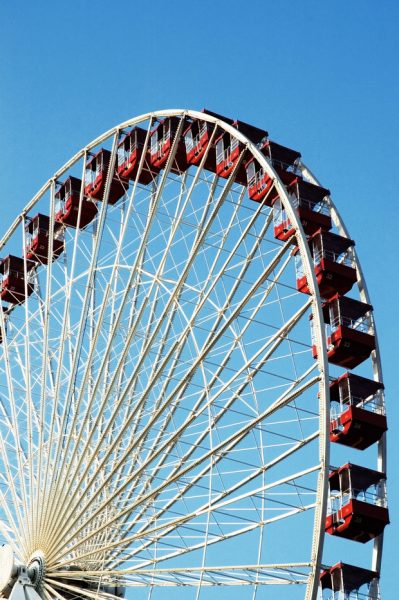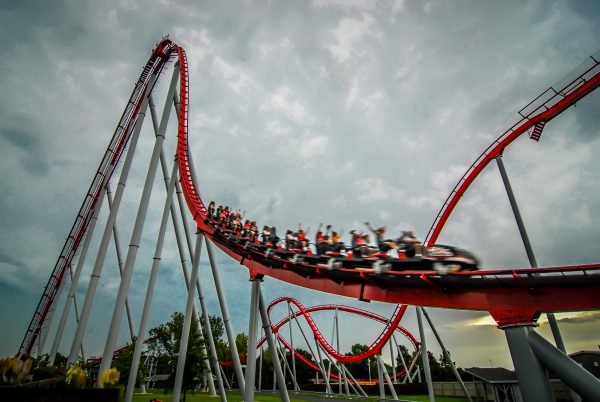 Heading to a carnival or amusement park is a great opportunity to enjoy some thrills on the rides. Roller coasters are becoming faster, higher, and scarier. However, accidents at amusement parks and carnival venues are at an all-time high.
Heading to a carnival or amusement park is a great opportunity to enjoy some thrills on the rides. Roller coasters are becoming faster, higher, and scarier. However, accidents at amusement parks and carnival venues are at an all-time high.
Statistics released by the U. S. Consumer Product Safety Commission indicate that more than 270 million people visit American amusement parks every year. On average, around 9,000 people are treated in emergency rooms each year for injuries sustained while riding amusement rides.
Fortunately, there are some simple things you can do to reduce your risk of injury the next time you jump onto a roller coaster or wild ride.
The owners and management of amusement parks understand the importance of patron safety. They also understand that roller coasters and other wild rides that jolt or turn suddenly can increase the risk of injury for some people.
For these reasons, safety rules are commonly posted at the start of each ride. Be sure you obey the listed age, height, weight, and health restrictions posted by each ride.
Always use the safety equipment, harnesses, seat belts, or restraints provided in the intended manner. If the ride operator or a recorded message issues verbal instructions at the start of the ride, listen carefully and be sure to obey the required rules.
Remember, if you sustain an injury while on an amusement ride and you were found to be disobeying the safety rules, the park could potentially use this as a defense to absolve themselves of any liability.
Inspect the Park
Take note of the carnival or park’s general appearance. If the grounds aren’t well-maintained, it could potentially be a reflection on how well-maintained the rides are too.
It’s also a good idea to check whether there are security officers or police officers patrolling the park to ensure any unruly visitors are kept in check. In most cases, park owners are keenly aware of their responsibility to provide a safe environment for visitors to enjoy, so most rides and attractions should be in good operating order at all times.
Try to Relax
Amusement rides can be a lot of fun. However, they’re also intended to thrill with unexpected moves, turns, and twists, along with plenty of force that can throw you around in various directions.
Go with the flow and enjoy the ride, but try not to tense up too much. If your body is tense throughout the entire ride, you’re putting extra stress on joints and muscles. You could also increase the pressure to your spinal joints or neck, and cause trauma to muscles, ligaments, and other soft tissue, all of which could result in aches and pains the following day.

Stay Limber
One of the best ways to prevent neck or back pain from thrill rides is to keep your body limber and flexible. Spend a few minutes doing some simple stretches that can help to loosen tight muscles and reduce the risk of muscle spasms before getting on any rides. You’ll reduce your risk of causing muscle strain or minor ligament strains or tears you could potentially suffer after a enjoying ride intended to forcefully throw your body in different directions.
Stay Hydrated
While you’re at a carnival or amusement park, drink plenty of water to keep your body hydrated. Dehydration can cause muscle soreness , which could be further aggravated by riding a thrill ride or roller coaster. Your muscles and ligaments will respond better if you’re well hydrated, so drink plenty of water and stay clear of alcohol.
Of course, while it’s possible to reduce your risk of being injured while riding a thrill ride, there are always situations where the injury was caused by a mechanical issue or fault in the ride. In the event that you sustain an injury while on an amusement ride, it’s important to seek out the assistance of a reputable personal injury lawyer in Salt Lake City, Utah to ensure you’re properly compensated.
Heading to the carnival or amusement park is a great way to enjoy some thrills and chills. In fact, riding the roller coaster and other thrill rides can often be some of the safest forms of entertainment around. Be sure to do whatever you can to minimize the risk of heading home to contend with muscle aches and pains and your day at the park will be much happier overall.
Personal Injury and Accident Lawyer Craig Swapp practices law in the states of Utah, Washington, Idaho and Colorado. He has dedicated his career to helping people who have been injured or killed as the result of someone else’s negligence or wrong doing. He is a zealous advocate for his clients in their fight against corporations and the multi-billion dollar insurance industry.
